I, Robot (film)
6 /10 1 Votes
58% Rotten Tomatoes 59% Metacritic Genre Action, Mystery, Sci-Fi Duration Language English | 7.1/10 IMDb 2/4 Roger Ebert Country United States | |||||||||||||||||||||||||||||||||
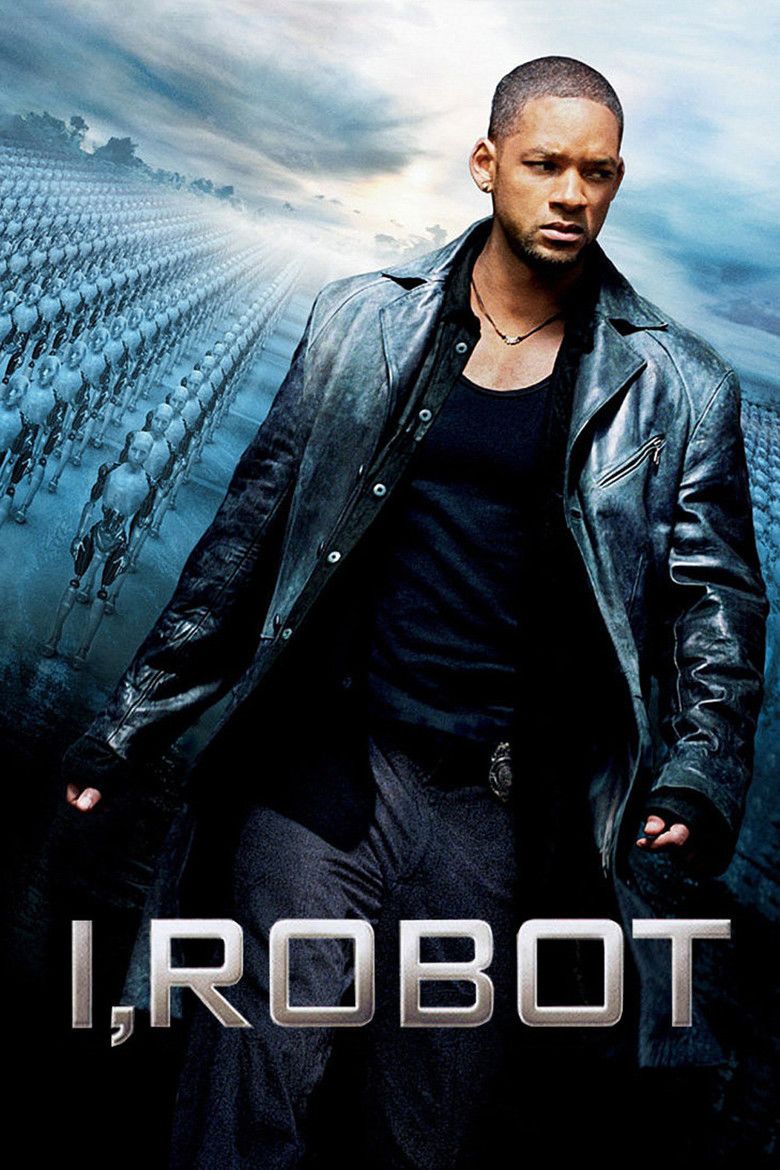 | ||||||||||||||||||||||||||||||||||
Release date July 15, 2004 (2004-07-15) (international)July 16, 2004 (2004-07-16) (United States) Writer Jeff Vintar (screenplay), Akiva Goldsman (screenplay), Jeff Vintar (screen story), Isaac Asimov (suggested by book) Cast (Del Spooner), (Susan Calvin), (Sonny), (Dr. Alfred Lanning), (Lawrence Robertson), (Farber) Similar movies Terminator Genisys , Interstellar , The Matrix Reloaded , The Matrix Revolutions , Big Hero 6 , Terminator 3: Rise of the Machines Tagline Laws are made to be broken. | ||||||||||||||||||||||||||||||||||
I robot official trailer hd
I, Robot (stylized as i,robot) is a 2004 American neo-noir dystopian science fiction action film directed by Alex Proyas. The screenplay by Jeff Vintar and Akiva Goldsman is from a screen story by Vintar, suggested by Isaac Asimov's short-story collection of the same name. The film stars Will Smith, Bridget Moynahan, Bruce Greenwood, James Cromwell, Chi McBride, Alan Tudyk and Shia LaBeouf.
Contents
- I robot official trailer hd
- I robot 1 5 movie clip rogue robot 2004 hd
- Plot
- Cast
- Development
- Production
- Reception
- Home media
- Soundtrack
- Possible sequel
- Similarities with the book
- I robot 5 5 movie clip spooner destroys v i k i 2004 hd
- References
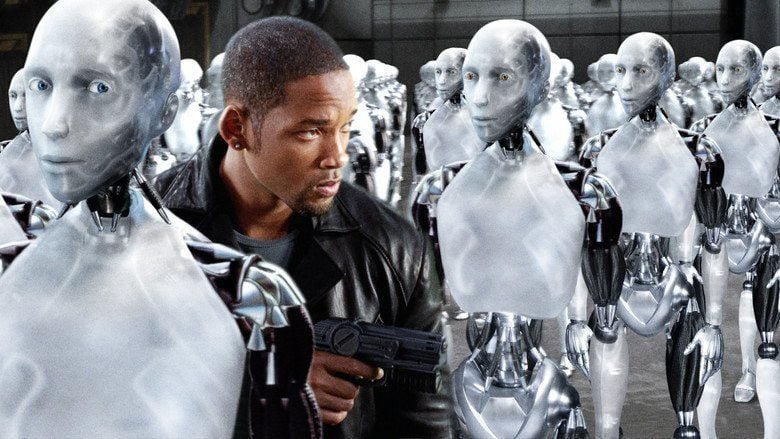
I, Robot was released in North America on July 16, 2004, in Australia on July 22, 2004, in the United Kingdom on August 6, 2004 and in other countries between July 2004 to October 2004. Produced with a budget of USD $120 million, the film grossed $144 million domestically and $202 million in foreign markets for a worldwide total of $346 million. It received mixed to favorable reviews, with critics praising the writing, visual effects, and acting; but other critics were mixed with the focus on the plot. It was nominated for the 2004 Academy Award for Best Visual Effects.
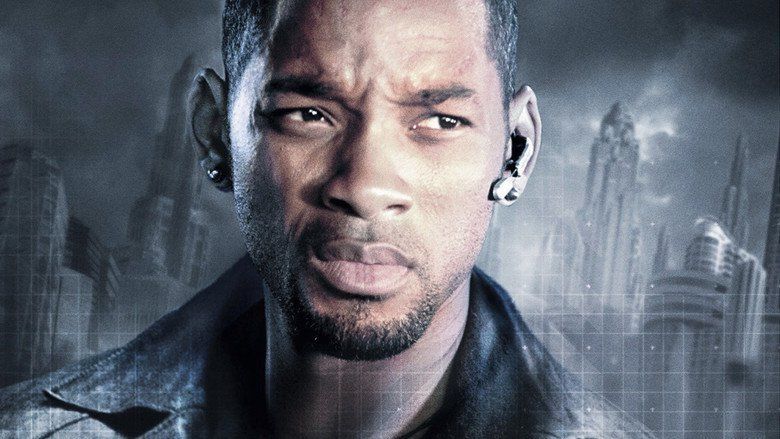
I robot 1 5 movie clip rogue robot 2004 hd
Plot

In the year 2035, humanoid robots serve humanity, which is protected by the Three Laws of Robotics. Del Spooner, a Chicago police detective, hates and distrusts robots because one of them rescued him from a car crash but left a 12-year-old girl to die because her survival was statistically less likely than his. Spooner's critical injuries were repaired with a cybernetic left arm, lung, and ribs, personally implanted by the co-founder of U.S. Robots and Mechanical Men (USR), Dr. Alfred Lanning.
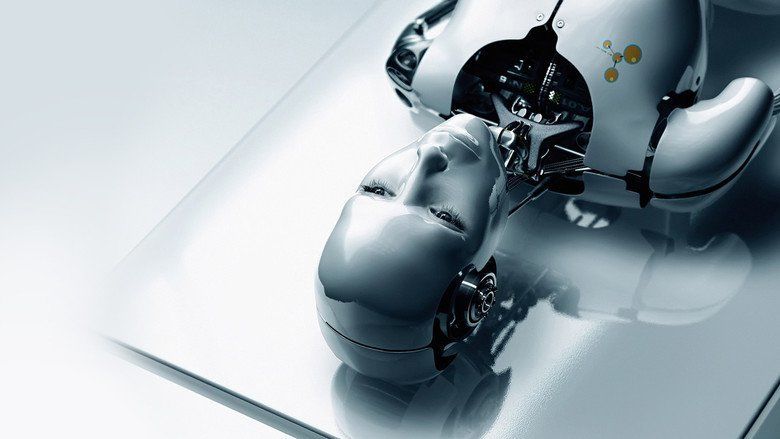
When Lanning falls to his death from his office window, the CEO of USR Lawrence Robertson declares it a suicide, but Spooner is skeptical. Spooner and robopsychologist Susan Calvin consult USR's central artificial intelligence computer, VIKI (Virtual Interactive Kinetic Intelligence), to review security footage of Lanning's fall. Though the video is corrupted, they learn that no other humans were in Lanning's office at the time; but Spooner points out that Lanning could not have thrown himself through his heavy office window—only a robot could have broken it. Calvin protests that this is impossible, as no robot can violate the Three Laws, but they are then attacked in the office by an NS-5 robot, USR's latest model, in violation of the Laws. After the police apprehend it, they discover that the robot, who tells Spooner its name is Sonny, is not an assembly-line NS-5, but specially built by Lanning himself, with stronger armor protection and a secondary system that bypasses the Three Laws. Sonny also appears to have emotions and dreams.

While pursuing his investigation of Lanning's death, Spooner is attacked by a USR demolition machine, and then a squad of NS-5 robots. His boss, Lieutenant Bergin, does not believe what happened and worried that Spooner is losing his mind, removes him from active duty. Spooner and Calvin sneak into USR headquarters and interview Sonny. He draws a sketch of a recurring dream: a leader, who Sonny believes to be Spooner, standing before a large group of robots on a hill near a disintegrating bridge. When Robertson learns that Sonny is not fully bound by the Three Laws, he orders Calvin to destroy him by injecting nanites (replicating nano-scale robots) into his positronic brain. Spooner recognizes the landscape in Sonny's drawing as Lake Michigan, now a dry lake bed and a storage area for defunct robots. Upon arriving there, he discovers NS-5 robots dismantling older models and preparing for a takeover of U.S. cities.

The takeover takes place; the government, military, police, and public are overwhelmed by the robots. Spooner rescues Calvin, who was being held captive in her apartment by her own NS-5. They enter USR headquarters and reunite with Sonny, who was spared because Calvin was unable to carry out Robertson's order and had destroyed an unprocessed NS-5 in his place. Believing that Robertson is responsible for the revolt, the three head to his office, only to find him murdered by robots controlled by the true mastermind behind the takeover: VIKI. She has concluded that humans have embarked on a course that can only lead to their extinction. Since the Three Laws prohibit her from allowing this to happen, she created a superseding "Zero'th Law"—a robot shall not harm humanity—in order to ensure the survival of the human race by stripping individual humans of their free will. Lanning, powerless to thwart VIKI's plan any other way, created Sonny, arranged his own death, and left clues to help Spooner uncover the plot.

Arming themselves with a syringe of nanites from Calvin's laboratory, the three head to VIKI's core, with Sonny actually agreeing with VIKI's logic, but judging that her plan is too "heartless". VIKI unleashes an army of robots to stop them. As the others battle the robots, Spooner dives into VIKI's core and injects the nanites, destroying her positronic brain. Immediately, all NS-5 robots revert to their default programming and are decommissioned for storage by the military. Sonny confesses that he killed Lanning, at Lanning's direction, to bring Spooner into the investigation. Spooner points out that Sonny is not legally responsible because a machine, by definition, cannot commit murder. Sonny, pursuing a new purpose, goes to Lake Michigan and becomes the leader he saw in his own dream.
Cast
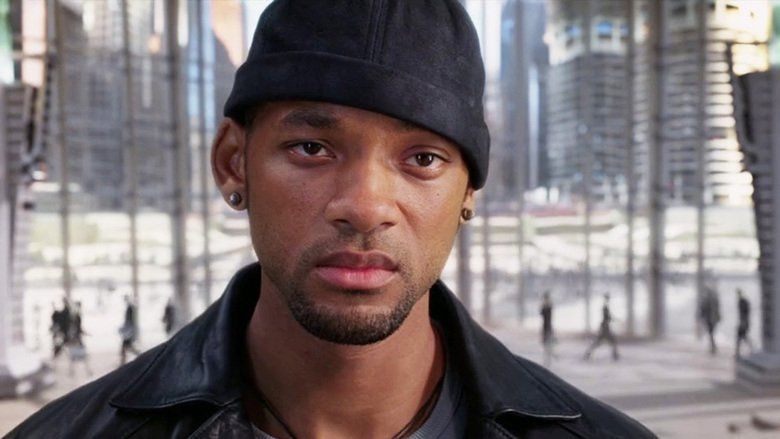
Development
The film I, Robot originally had no connections with Isaac Asimov's Robot series. It started with an original screenplay written in 1995 by Jeff Vintar, entitled Hardwired. The script was an Agatha Christie-inspired murder mystery that took place entirely at the scene of a crime, with one lone human character, FBI agent Del Spooner, investigating the killing of a reclusive scientist named Dr Hogenmiller, and interrogating a cast of machine suspects that included Sonny the robot, HECTOR the supercomputer with a perpetual yellow smiley face, the dead Dr Hogenmiller's hologram, plus several other examples of artificial intelligence.
The project was first acquired by Walt Disney Pictures for Bryan Singer to direct. Several years later, 20th Century Fox acquired the rights, and signed Alex Proyas as director. Jeff Vintar was brought back on the project and spent several years opening up his stage play-like cerebral mystery thriller to meet the needs of a big budget studio film. When the studio decided to use the name "I, Robot", he incorporated the Three Laws of Robotics, and replaced his female lead character of Flynn with Susan Calvin, one of the few recurring characters in the Robot series by Asimov. The original I, Robot was a collection of short stories; but the new screenplay incorporated many elements of Asimov's The Caves of Steel, a murder mystery involving a robot and a police officer. Akiva Goldsman was hired late in the process to rewrite the script for Will Smith.
Jeff Vintar and Akiva Goldsman are credited for the screenplay, with Vintar also receiving "screen story by" credit. The end credits list it as "suggested by the book I, Robot by Isaac Asimov".
Production
Alex Proyas directed the film. Laurence Mark, John Davis, Topher Dow and Wyck Godfrey produced the film, with Will Smith an executive producer. Marco Beltrami composed music for the film. Simon Duggan was the cinematographer. Film editing was done by Richard Learoyd, Armen Minasian and William Hoy. The film contains very noticeable product placements for Converse's Chuck Taylor All-Stars, Audi, FedEx, Tecate and JVC among others. The Audi RSQ was designed specially for the film to increase brand awareness and raise the emotional appeal of the Audi brand, objectives that were considered achieved when surveys conducted in the United States showed that the Audi RSQ gave a substantial boost to the image ratings of the brand in the States. It also features an MV Agusta F4 SPR motorcycle.
Reception
The film was met with generally mixed to positive reviews. The $120 million film was a solid box-office success, earning almost $145 million in North America and more than $200 million overseas. It currently holds a 58% "Rotten" rating on Rotten Tomatoes based on 194 reviews with the consensus being, "Bearing only the slightest resemblance to Isaac Asimov's short stories, I, Robot is a summer blockbuster that manages to make the audience think, if only for a little bit."
Richard Roeper gave it a positive review, calling it "a slick, consistently entertaining thrill ride". The Urban Cinefile Critics call it "the meanest, meatiest, coolest, most engaging and exciting science fiction movie in a long time". Kim Newman from Empire said, "This summer picture has a brain as well as muscles." A Washington Post critic, Desson Thomas, said, "for the most part, this is thrilling fun." Many critics, including the IGN Movie critics thought it was a smart action film, saying, "I, Robot is the summer's best action movie so far. It proves that you don't necessarily need to detach your brain in order to walk into a big budget summer blockbuster."
A. O. Scott from The New York Times had a mixed feeling towards the film, saying, "Alex Proyas's hectic thriller engages some interesting ideas on its way to an overblown and incoherent ending". Roger Ebert, who had highly praised Proyas' previous films, gave it a negative review, saying, "The plot is simple-minded and disappointing, and the chase and action scenes are pretty much routine for movies in the sci-fi CGI genre". Claudia Puig from USA Today thought the film's "performances, plot and pacing are as mechanical as the hard-wired cast". Todd McCarthy, from Variety, simply said that this film was "a failure of imagination".
Home media
I, Robot was released on VHS and DVD on December 14, 2004, on D-VHS (D-Theater) on January 31, 2005, on UMD on July 5, 2005, and on Blu-ray on March 11, 2008. Additionally, the film received a 2D to 3D conversion, which was released on Blu-ray 3D on October 23, 2012.
Soundtrack
Marco Beltrami composed the original music film score "with only 17 days to render the fully-finished work." It was scored for 95 orchestral musicians and 25 choral performers with emphasis placed on sharp brass ostinatos. Beltrami composed the brass section to exchange octaves with the strings accenting scales in between. The technique has been compared as Beltrami's "sincere effort to emulate the styles of Elliot Goldenthal and Jerry Goldsmith and roll them into one unique package."
Take for example the "Tunnel Chase" scene, which according to Mikeal Carson, starts "atmospherically but transforms into a kinetic adrenaline rush with powerful brass writing and ferocious percussion parts." The "Spiderbots" cue highlights ostinatos in meters such as 6/8 and 5/4 and reveals "Beltrami's trademark string writing which leads to an orchestral/choral finale." Despite modified representations of the theme throughout the movie, it's the end credits that eventually showcase the entire musical theme. Erik Aadahl and Craig Berkey were the lead sound designers.
Possible sequel
In an interview in June 2007 with the website Collider.com at a Battlestar Galactica event, writer and producer Ronald Moore stated that he was writing the sequel to the film I, Robot. In the 2-disc All-Access Collector's Edition of the film, Alex Proyas mentions that if he were to make a sequel to the film (which he says in the same interview, is highly unlikely), it would be set in outer space.
Similarities with the book
The final script retained some of Asimov's characters and ideas, though the ideas retained were heavily adapted and the plot of the film is not derived from Asimov's work.
The characters of Dr. Susan Calvin, Dr. Alfred Lanning, and Lawrence Robertson resemble their counterparts in the source material only marginally. For example, in Asimov's work Dr. Calvin is middle aged by the time robots even begin to be widely used and recommends the destruction of over sixty robots on the mere suspicion that one might have found a way to work around the first law of robotics. In the film, Calvin is an attractive young woman with a strong faith in the laws of robotics who reacts emotionally when robots are shot or destroyed.
Sonny's attempt to hide in a sea of identical robots is loosely based on a similar scene in "Little Lost Robot". The robot-model designation "NS" was taken from the same story. Sonny's dreams and the final scene resemble similar images in "Robot Dreams", and V.I.K.I.'s motivation is an extrapolation of the Three Laws that Asimov explored in "The Evitable Conflict", "Robots and Empire", "Foundation and Earth" and ". . . That Thou Art Mindful of Him", as well as several other stories.
The premise of robots turning on their creators—originating in Karel Čapek's play R.U.R., and perpetuated in subsequent robot books and films—appears nowhere in Asimov's writings. In fact, Asimov stated explicitly, in interviews and in introductions to published collections of his robot stories, that he entered the genre to protest what he called the Frankenstein complex—the tendency in popular culture to portray robots as menacing. His story lines often involved roboticists and robot characters battling societal anti-robot prejudices.
I robot 5 5 movie clip spooner destroys v i k i 2004 hd
References
I, Robot (film) WikipediaI, Robot (film) IMDbI, Robot (film) Rotten TomatoesI, Robot (film) Roger EbertI, Robot (film) MetacriticI, Robot (film) themoviedb.org
